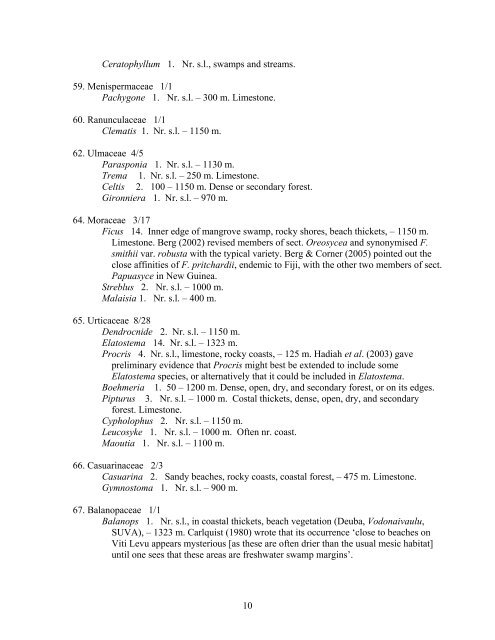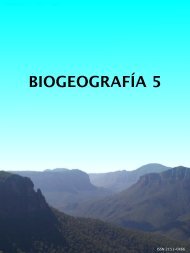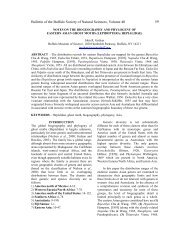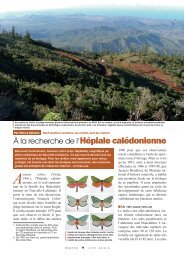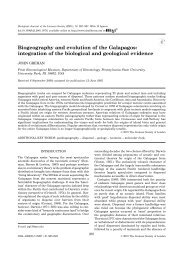You also want an ePaper? Increase the reach of your titles
YUMPU automatically turns print PDFs into web optimized ePapers that Google loves.
Ceratophyllum 1. Nr. s.l., swamps and streams.<br />
59. Menispermaceae 1/1<br />
Pachygone 1. Nr. s.l. – 300 m. Limestone.<br />
60. Ranunculaceae 1/1<br />
Clematis 1. Nr. s.l. – 1150 m.<br />
62. Ulmaceae 4/5<br />
Parasponia 1. Nr. s.l. – 1130 m.<br />
Trema 1. Nr. s.l. – 250 m. Limestone.<br />
Celtis 2. 100 – 1150 m. Dense or secondary forest.<br />
Gironniera 1. Nr. s.l. – 970 m.<br />
64. Moraceae 3/17<br />
Ficus 14. Inner edge of mangrove swamp, rocky shores, beach thickets, – 1150 m.<br />
Limestone. Berg (2002) revised members of sect. Oreosycea and synonymised F.<br />
smithii var. robusta with the typical variety. Berg & Corner (2005) pointed out the<br />
close affinities of F. pritchardii, endemic to Fiji, with the other two members of sect.<br />
Papuasyce in New Guinea.<br />
Streblus 2. Nr. s.l. – 1000 m.<br />
Malaisia 1. Nr. s.l. – 400 m.<br />
65. Urticaceae 8/28<br />
Dendrocnide 2. Nr. s.l. – 1150 m.<br />
Elatostema 14. Nr. s.l. – 1323 m.<br />
Procris 4. Nr. s.l., limestone, rocky coasts, – 125 m. Hadiah et al. (2003) gave<br />
preliminary evidence that Procris might best be extended to include some<br />
Elatostema species, or alternatively that it could be included in Elatostema.<br />
Boehmeria 1. 50 – 1200 m. Dense, open, dry, and secondary forest, or on its edges.<br />
Pipturus 3. Nr. s.l. – 1000 m. Costal thickets, dense, open, dry, and secondary<br />
forest. Limestone.<br />
Cypholophus 2. Nr. s.l. – 1150 m.<br />
Leucosyke 1. Nr. s.l. – 1000 m. Often nr. coast.<br />
Maoutia 1. Nr. s.l. – 1100 m.<br />
66. Casuarinaceae 2/3<br />
Casuarina 2. Sandy beaches, rocky coasts, coastal forest, – 475 m. Limestone.<br />
Gymnostoma 1. Nr. s.l. – 900 m.<br />
67. Balanopaceae 1/1<br />
Balanops 1. Nr. s.l., in coastal thickets, beach vegetation (Deuba, Vodonaivaulu,<br />
SUVA), – 1323 m. Carlquist (1980) wrote that its occurrence ‘close to beaches on<br />
Viti Levu appears mysterious [as these are often drier than the usual mesic habitat]<br />
until one sees that these areas are freshwater swamp margins’.<br />
10


